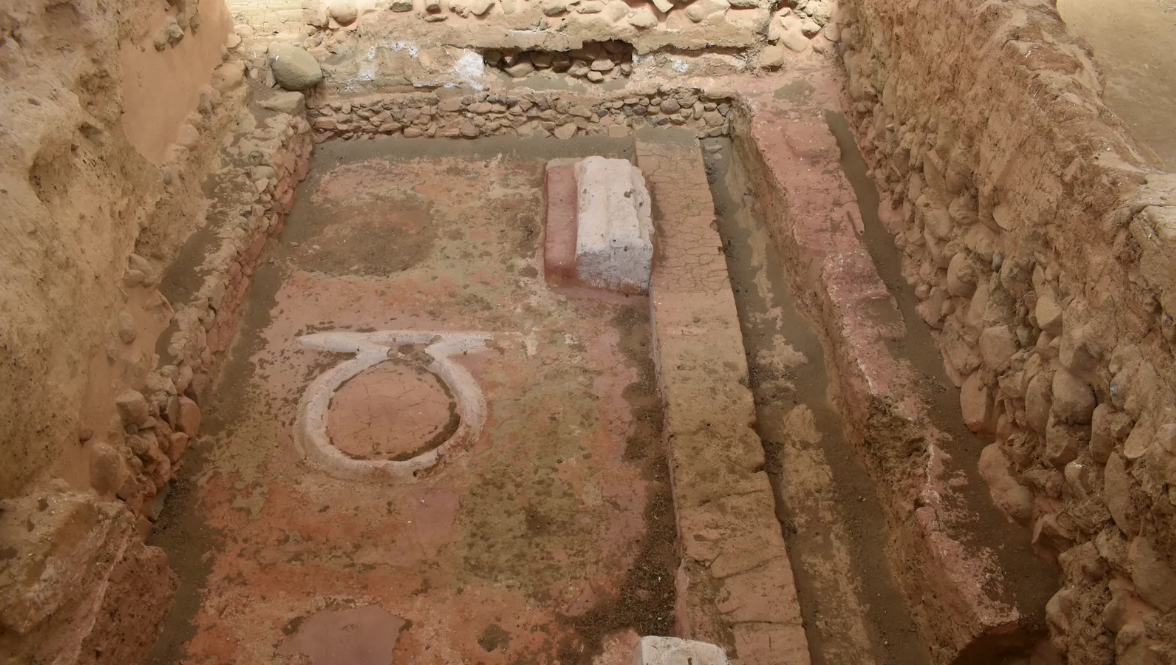
© Andrew Lofthouse via BBC News
Pre-reading questions
I will read each question. Then, please answer them.
講師がそれぞれの質問を読むので答えましょう。
- What places do you like to visit?
- What interests you the most about history?
Vocabulary
I will read the words, meanings, and sample sentences. Then, repeat after me.
単語、意味、例文を読みます。講師に続いて音読しましょう。
- ancient /EYN-shuhnt/
- exist /ig-ZIST/
- locate /loh-KEYT/
- border /BAWR-der/
- focus /FOH-kuhs/
[adjective] – of or from a long time ago, having lasted for a very long time
This stone axe dates back to ancient times.
[verb] – to be, or to be real
Sorry, but I don’t think ghosts exist.
[verb] – to be in a particular place
The airport is located next to the college.
[noun] – a line that has been agreed to divide one country from another
Poland and Germany share a common border.
[verb] – to give a lot of attention, time, energy, etc. to one particular group of customers or a particular activity
I had trouble focusing at work because of the noise.
Article reading
Please read the whole article. Then, I will check your pronunciation and intonation.
記事を音読しましょう。講師はあなたの発音とイントネーションを確認します。
An ancient and mysterious Iberian culture called Tartessos existed between the ninth and the fifth centuries before the present. But new research and technology are showing new details about the society.
Nowadays, Tartessos is generally accepted as an Iberian civilization that developed from the fusion of native peoples with Greek and Phoenician conquerors. Its rich commercial sector and metal resources both contributed to its wealth. Early research shows that the Tartessos civilization was originally located in and around the Guadalquivir Valley in Andaluca. But more recent discoveries in the Guadiana Valley, further to the west and close to Portugal’s border with Spain, have led archaeologists to rethink how wide the Tartessos territory was.
Despite the importance of knowing why the civilization disappeared, the majority of current studies focus on the social and cultural impacts of the Tartessos. Sebastián Celestino Pérez, a scientific investigator at the Institute of Archaeology in Merida, said that “the so-called Tartessian tombs of the Guadiana seem to have the key to know this culture better.”
Nowadays, Tartessos is generally accepted as an Iberian civilization that developed from the fusion of native peoples with Greek and Phoenician conquerors. Its rich commercial sector and metal resources both contributed to its wealth. Early research shows that the Tartessos civilization was originally located in and around the Guadalquivir Valley in Andaluca. But more recent discoveries in the Guadiana Valley, further to the west and close to Portugal’s border with Spain, have led archaeologists to rethink how wide the Tartessos territory was.
Despite the importance of knowing why the civilization disappeared, the majority of current studies focus on the social and cultural impacts of the Tartessos. Sebastián Celestino Pérez, a scientific investigator at the Institute of Archaeology in Merida, said that “the so-called Tartessian tombs of the Guadiana seem to have the key to know this culture better.”
True or False:
Read the sentences and identify if they are true or false based on the article.
文章を読んで、記事に基づいて正誤を答えましょう。
- Tartessos existed between the ninth and the fifth centuries.
- The Tartessos was not wealthy.
- The Guadalquivir Valley in Andaluca is where the Tartessos civilization was first located.
- There have been discoveries that Tartessos had a wider territory.
- Sebastián Celestino Pérez is an author.
Fill in the blanks
Choose the correct word from the table then fill in the blanks.
適切な言葉を選んで空欄を埋めましょう。
| ancient | exist | locate | border | focus |
- Do you think fairies _______?
- Does this train cross the _______ between Spain and France?
- It’s time to _______ on small goals for now.
- The pharmacy is _______ in the hospital itself.
- The _______ legend says that this mountain used to be a princess.